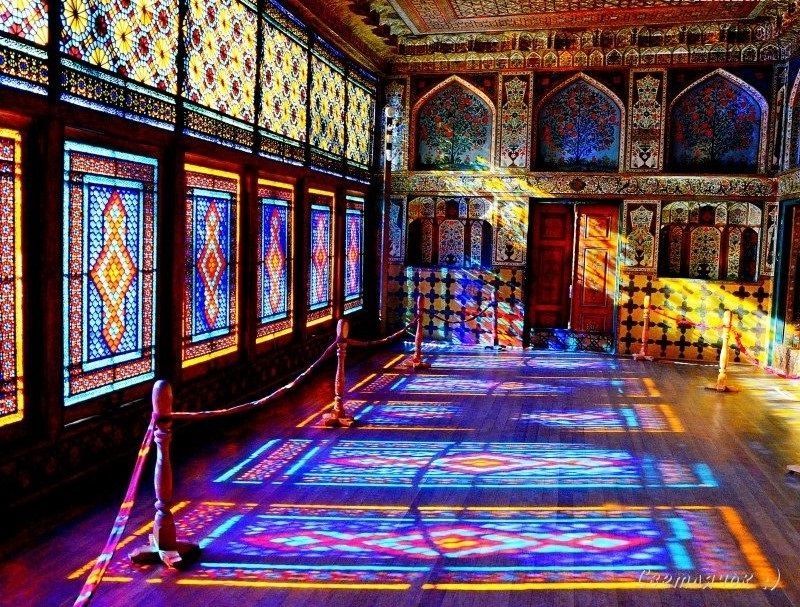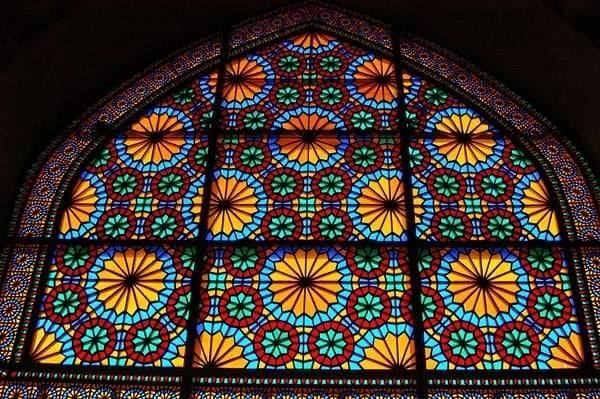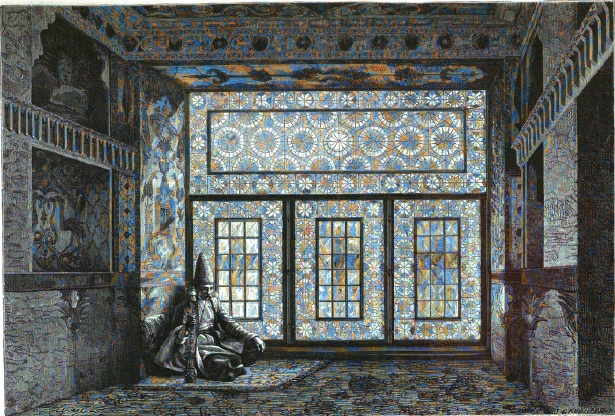|
|
TODAY.AZ / Arts & Entertainment
Explore rich legacy of shabaka art in Shaki and Shusha
22 January 2024 [17:57] - TODAY.AZ
 Laman Ismayilova
Laman Ismayilova
Azerbaijani decorative and applied art has a thousand-year history and rich artistic traditions.
Shabaka, also known as stained-glass windows, take a special place in Azerbaijani art and history, Azernews reports.
Stained glass work known as shabaka are windows filled with colored glass, created by national Azerbaijani masters from small wooden parts without glue and nails.
This intangible cultural heritage has been used in the architecture of Azerbaijan since the 11th and 12th centuries.
The unique art form was widespread on the territory of Azerbaijan, especially in Shaki, Shusha, Ordubad, Baku, Ganja, Lankaran, and Nakhchivan.
Shaki Khans' Palace
Shaki Khans' Palace is a remarkable example of shabaka art. In 2019, the Historic Centre of Shaki with the Khans' Palace was inscribed as a UNESCO World Heritage Site.

This majestic royal palace was built in the 18th century without a single nail, with luxurious wall paintings and openwork windows.
Stained-glass windows in the central halls and side rooms open on the facade. These stained-glass windows are a special feature of the palace's architecture.
The summer residence is renowned for its majestic interior. Large portions of the facade of the residence, including the entire southern elevations of the central halls on both floors, are covered by a mosaic of colored glass set in a wooden latticework (shabaka).
The interior walls of the residence are covered entirely with frescoes painted at different times during the eighteenth century.
Shabaka art in Shusha
There were numerous residential stone houses of the 18th and 19th centuries, decorated with shabaka, in the city of Shusha.
In the second half of the 19th century, Shusha turned into a cultural centre not only for Azerbaijan but also for the entire Caucasus and was distinguished by its architectural beauty.

Every Azerbaijani house has always had relatively large guest rooms, the design of which was given special attention.
In the 19th century, the guest rooms' design in Shusha included shabaka windows.
The windows in these houses, made in the shabaka style with multi-colored glass, were a source of special pride for the people of Shusha.
The notes of travellers repeatedly indicated that the large houses in Shusha differed from the houses of other Caucasian cities in their landscaping and design.

An excellent confirmation of this are the sketches of the Russian artist Vasily Vereshchagin, who visited Shusha in 1865.
Famous folk craftsmen like Mehdi Mehdiyev (19th century), Shahbuzla Abuzer Badalov (18th-19th centuries), and Abbasgulu Sheki (19th century) significantly contributed to the preservation of Azerbaijan's traditional stained-glass art
The revival of this art in the 20th century was facilitated by Abdulhuseyn Babayev (1877–1961) and Ashraf Rasulov (1928-1997).
Today, shabaka art continues to live thanks to talented craftsmen who astonish art aesthetes with incredibly beautiful stained-glass windows.
URL: http://www.today.az/news/entertainment/243889.html
 Print version
Print version
Connect with us. Get latest news and updates.
See Also
- 02 May 2025 [15:39]
Azerbaijan to be represented at third Fujairah International Oud Forum - 02 May 2025 [15:00]
Weaving Future: Inese Baranovska on living tradition of carpets - 02 May 2025 [14:16]
Young talents dazzle in Austria - 02 May 2025 [13:19]
Honored Artist Nijat Kazimov holds seminar on theater art - 02 May 2025 [12:22]
Baku Municipal Theater premieres play by Uzbek writer - 02 May 2025 [11:37]
International Mugham Center pays tribute to Int'l German composer - 02 May 2025 [11:02]
Trainings in music and arts schools start based on teacher certification results - 02 May 2025 [10:00]
International Carpet Festival to kick off in Icherisheher - 01 May 2025 [13:13]
Honored Artists thrill audience at International Mugham Center - 01 May 2025 [12:23]
Culture Minister meets with People's Artist Shafiga Mammadova
Most Popular
 Paraguay designates Hamas, Hezbollah, Iranian Guards as terrorist organizations
Paraguay designates Hamas, Hezbollah, Iranian Guards as terrorist organizations
 Türkiye becomes strategic partner in Three Seas Initiative
Türkiye becomes strategic partner in Three Seas Initiative
 Baku court reviews video alleging criminal Ishkhanyan blocked Azerbaijani troops from reaching Shusha
Baku court reviews video alleging criminal Ishkhanyan blocked Azerbaijani troops from reaching Shusha
 Ankara vows no compromise on national interests amid Greek Cypriot provocations
Ankara vows no compromise on national interests amid Greek Cypriot provocations
 Azerbaijan, Kazakhstan begin talks on new double taxation agreement
Azerbaijan, Kazakhstan begin talks on new double taxation agreement
 Azerbaijani youth representative highlights green innovation and leadership at UN ECOSOC Youth Forum
Azerbaijani youth representative highlights green innovation and leadership at UN ECOSOC Youth Forum
 British civil servants lost more than 3,000 phones and laptops in year
British civil servants lost more than 3,000 phones and laptops in year
